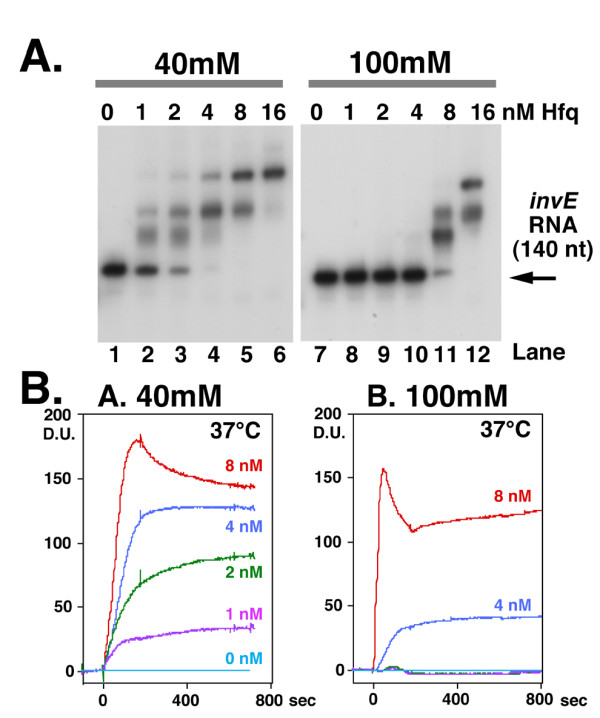Figure 5.

A. Gel-shift analysis in the presence of 40 mM or 100 mM NH4Cl. A 5'-end labelled invE RNA probe (2 nM) was mixed with Hfq protein and then incubated at 37°C for 10 min. Electrophoresis was carried out at 37°C. Concentration of NH4Cl (40 mM, 100 mM) and Hfq protein are indicated above the panels. The final concentration of Hfq hexamer was as follows: lanes 1 and 7, 0; lanes 2 and 8, 1 nM; lanes 3 and 9, 2 nM; lanes 4 and 10, 4 nM; lanes 5 and 11, 8 nM; lanes 6 and 12, 16 nM. B. Analysis of the interaction of Hfq and invE RNA by surface plasmon resonance. The invE RNA probe was immobilized onto a sensor chip and binding assays were carried out using a Biacore 2000 optical sensor device. Experiments were performed in 40 mM (Graph A) and 100 mM (Graph B) NH4Cl at 37°C. Hfq was diluted in the indicated RNA binding buffer (0, 1, 2, 4 or 8 nM, as indicated on the right side of the graph), and then injected for 180 seconds at a flow rate of 20 ml/min. The results are expressed as difference units (D.U.).
